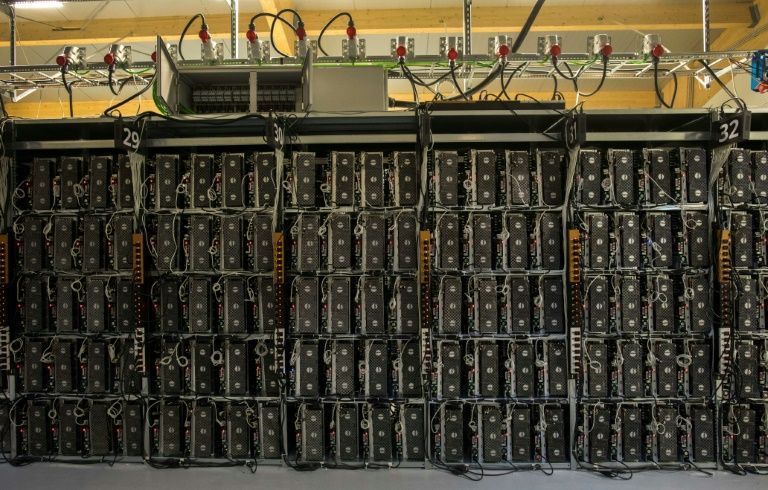ISRO on Thursday released the first image of the surface of the moon captured by the Imaging Infrared Spectrometer (IIRS) payload on-board Chandrayaan-2.



Paris (AFP) — Scientists claimed Wednesday to have achieved a near-mythical state of computing in which a new generation of machine vastly outperforms the world’s fastest super-computer, known as “quantum supremacy”.
A team of experts working on Google’s Sycamore machine said their quantum system had executed a calculation in 200 seconds that would have taken a classic computer 10,000 years to complete.
A rival team at IBM has already expressed scepticism about their claim.

UK company Reaction Engines has tested its innovative precooler at airflow temperature conditions equivalent to Mach 5, or five times the speed of sound. This achievement marks a significant milestone in its ESA-supported development of the air-breathing SABRE engine, paving the way for a revolution in space access and hypersonic flight.
The precooler heat exchanger is an essential SABRE element that cools the hot airstream generated by air entering the engine intake at hypersonic speed.
“This is not only an excellent achievement in its own right but one important step closer to demonstrating the feasibility of the entire SABRE engine concept,” said Mark Ford, heading ESA’s Propulsion Engineering section.
Raytheon has delivered the first anti-drone buggy to the US Air Force, just over year after it introduced the technology. It’s a high-energy laser system mounted on a small all-terrain vehicle, to be specific, which uses electro-optical/infrared sensors to detect and track drones. After it identifies and tracks the unwelcome flying device, it then neutralizes it with its laser in a process that takes a few seconds.

DETROIT — Electric vehicle startup Rivian Automotive got a big boost from one of its investors on Thursday when Amazon.com announced it was ordering 100,000 electric delivery vans.
Before Rivian has even begun commercial production at its factory in Normal, Illinois, the Amazon order rocketed it to the forefront of electric vehicle makers.
Amazon Chief Executive Jeff Bezos said in Washington that as part of the online retailer’s plan to be carbon neutral by 2040 it would order the electric vans from Rivian, with deliveries starting in 2021. The goal is to deploy all the vehicles by 2024.

A bit old news.
As the fast charging infrastructure progresses towards 150–350 kW power levels (for passenger cars and beyond in case of bigger vehicles), also plug/connector suppliers try to keep pace with change.
Here we see one of the ITT Cannon DC fast charging plugs, presented at the eMove360° fairs in Munich, Germany.
The company says that its ultra-fast liquid-cooled High Power Charging (HPC) solution is ready to deliver current of 500 A at a voltage of 1,000 V, which would be 500 kW! The HPC is available in both, CCS1 and CCS2 variants for North American and European markets.
Is Google moving past the rest of the competition.
Quantum computers’ potential and the advantages they promise over classical computers all remain largely theoretical, and hypothetically speaking, it is predicted that quantum computers will be able to solve problems that are beyond the reach of the classical computers we use today. Passing such a threshold will be considered proof of what we call “quantum supremacy.”
A leaked research paper revealed that Google has reached this level of quantum supremacy but the leak was quickly taken down leaving more questions than answers.
So where do we go from here? What does a world with quantum supremacy look like?
The universe is kind of an impossible object. It has an inside but no outside; it’s a one-sided coin. This Möbius architecture presents a unique challenge for cosmologists, who find themselves in the awkward position of being stuck inside the very system they’re trying to comprehend.
It’s a situation that Lee Smolin has been thinking about for most of his career. A physicist at the Perimeter Institute for Theoretical Physics in Waterloo, Canada, Smolin works at the knotty intersection of quantum mechanics, relativity and cosmology. Don’t let his soft voice and quiet demeanor fool you — he’s known as a rebellious thinker and has always followed his own path. In the 1960s Smolin dropped out of high school, played in a rock band called Ideoplastos, and published an underground newspaper. Wanting to build geodesic domes like R. Buckminster Fuller, Smolin taught himself advanced mathematics — the same kind of math, it turned out, that you need to play with Einstein’s equations of general relativity. The moment he realized this was the moment he became a physicist. He studied at Harvard University and took a position at the Institute for Advanced Study in Princeton, New Jersey, eventually becoming a founding faculty member at the Perimeter Institute.
“Perimeter,” in fact, is the perfect word to describe Smolin’s place near the boundary of mainstream physics. When most physicists dived headfirst into string theory, Smolin played a key role in working out the competing theory of loop quantum gravity. When most physicists said that the laws of physics are immutable, he said they evolve according to a kind of cosmic Darwinism. When most physicists said that time is an illusion, Smolin insisted that it’s real.


Dr Neal also said there were safety risks with people buying the equipment from online sites and doing the procedures from home.
The Scottish government told BBC Scotland’s The Nine it intended to regulate procedures carried out by non-healthcare professionals and it was consulting on how this could be done.
Meet the people seeking to improve their bodies by implanting technology such as microchips.